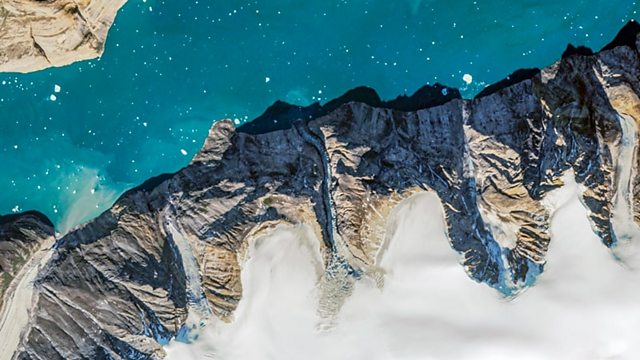A landslide-induced megatsunami in Greenland
Nearly a year ago, a two-hundred-metre-high tsunami sloshed between the cliffs of Dickson Fjord for nine days. It was caused by a landslide and produced a global seismic signal.
Nearly a year ago, the top of a mountain on the Greenland coast broke off and slid a thousand metres down into the Dickson Fjord. The impact created a tsunami that started two-hundred-metres-high and sloshed between the cliffs for nine days, producing a global seismic signal. But it was so remote, only now are the details becoming clear. We hear from Paula Koelemeijer, Wieter Boone and SΓΈren Rysgaard.
The decline of the ancient inhabitants of Rapa Nui was unlikely to have been caused by a self-inflicted population collapse, thereby rejecting a contentious theory of βecological suicideβ. Anna-Sapfo Malaspinas of the University of Lausanne discusses her teamβs findings which shed light on the population history of the island formerly known as Easter Island - one of the most remote inhabited places in the world, around 3,700 km west of South America and over 1,900 km east of the closest inhabited island.
A newly identified species of wasp that attacks and lays eggs inside an adult fly has been discovered by Logan Moore and colleagues from Mississippi State University. Around 200 species of parasitoid wasps that target the fruit fly have been discovered to date - they lay their eggs in living creatures - all of which have been shown to target their hosts during vulnerable stages, such as when larvae or pupae. Until now, no wasp that attacks and develops inside the adult stage of a fruit fly host has been described.
Presenter: Roland Pease
Producer: Jonathan Blackwell
Production Coordinator: Andrew Rhys Lewis
(Image: Copernicus Sentinel Data (2023). Credit: European Space Agency)
Last on
More episodes
Featured
-
.
Broadcasts
- Thu 12 Sep 2024 19:32GMTΒιΆΉΤΌΕΔ World Service
- Fri 13 Sep 2024 04:32GMTΒιΆΉΤΌΕΔ World Service Australasia, Americas and the Caribbean, South Asia & East Asia only
- Fri 13 Sep 2024 08:32GMTΒιΆΉΤΌΕΔ World Service
- Fri 13 Sep 2024 12:32GMTΒιΆΉΤΌΕΔ World Service East and Southern Africa, News Internet & West and Central Africa only
- Sun 15 Sep 2024 03:32GMTΒιΆΉΤΌΕΔ World Service East and Southern Africa, Europe and the Middle East & West and Central Africa only
Podcast
-
![]()
Science In Action
The ΒιΆΉΤΌΕΔ brings you all the week's science news.


